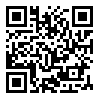Mon, Jul 1, 2024
[Archive]
Volume 2, Issue 3 (SEPTEMBER ISSUE 2021)
johepal 2021, 2(3): 180-187 |
Back to browse issues page
Download citation:
BibTeX | RIS | EndNote | Medlars | ProCite | Reference Manager | RefWorks
Send citation to:



BibTeX | RIS | EndNote | Medlars | ProCite | Reference Manager | RefWorks
Send citation to:
Hebert D M, Lovett M. (2021). Elements for Academic Leadership in a Virtual Space. johepal. 2(3), 180-187. doi:10.52547/johepal.2.3.180
URL: http://johepal.com/article-1-135-en.html
URL: http://johepal.com/article-1-135-en.html
Abstract: (2029 Views)
Higher education is facing the need for its leaders to adapt to an ever-increasingly virtual landscape. More than ever before, this became evident during the COVID-19 pandemic, which began in 2020. Previously-utilized leadership strategies proved less than effective tools for managing virtual faculty teams, and new, creative methods of leading people working remotely across wide geographical areas were launched almost overnight. Some worked; some did not. The purpose of this work is to explore the best practices for academic leaders to mentor, motivate, and guide their teams in virtual environments. The themes of creating a culture of trust, team-building and collaboration, and communication emerged in the literature as traits of effective leaders. Here, we apply those traits to personal experiences between March 2020 and May 2021 to propose a model for leadership in a virtual space.
Type of Study: Research |
Subject:
Special
Received: 2021/08/9 | Accepted: 2021/09/22 | Published: 2021/09/30
Received: 2021/08/9 | Accepted: 2021/09/22 | Published: 2021/09/30
References
1. Alward, E., & Phelps, Y. (2019). Impactful leadership traits of virtual leaders in higher education. Online Learning, 23(3), 72-93. [DOI]
2. Ažderska, T., & Jerman-Blažič, B. (2013). A holistic approach for designing human-centric trust systems. Systemic Practice and Action Research, 26(5), 417-450. [DOI]
3. Bjørn, P., & Ngwenyama, O. (2009). Virtual team collaboration: Building shared meaning, resolving breakdowns and creating translucence. Information Systems Journal, 19(3), 227-253. [DOI]
4. Crisp, C. B., & Jarvenpaa, S. L. (2013). Swift trust in global virtual teams. Journal of Personnel Psychology, 12(1), 45-56. [DOI]
5. Ehlers, U. D. (2020). Digital leadership in higher education. Journal of Higher Education Policy and Leadership Studies, 1(3), 6-14. [DOI]
6. Flückiger Y. (2021). The conditions for higher education institutions to meet the social challenges ahead. Journal of Higher Education Policy and Leadership Studies, 2(1), 120-129. [DOI]
7. Fournier, E., Scott, S., & Scott, D. E. (2020). Inclusive leadership during the COVID-19 pandemic: How to respond within an inclusion framework. International Studies in Educational Administration, 48(1), 17-23.
8. Hill, N. S., Kang, J. H., & Seo, M. G. (2014). The interactive effect of leader-member exchange and electronic communication on employee psychological empowerment and work outcomes. The Leadership Quarterly, 25(4), 772-783. [DOI]
9. Hirschy, M. J. (2011). Virtual team leadership: A case study in Christian higher education. Christian Higher Education, 10(2), 97-111. [DOI]
10. Makina, A. (2016). The theory of connectivism in enhancing leadership/management competences in e-learning in higher education. African Educational Research Journal, 4(4), 152-159.
11. Mohr, S. C., & Shelton, K. (2017). Best practices framework for online faculty professional development: A Delphi study. Online Learning, 21(4), 123-140. [DOI]
12. Peñarroja, V., Orengo, V., Zornoza, A., & Hernández, A. (2013). The effects of virtuality level on task-related collaborative behaviors: The mediating role of team trust. Computers in Human Behavior, 29(3), 967-974. [DOI]
13. Thaly, P., & Sinha, V. (2013). To prevent attrition in business process outsourcing, focus on people. Global Business and Organizational Excellence, 32(3), 35-43. [DOI]
| Rights and permissions | |
 |
This work is licensed under a Creative Commons Attribution-NonCommercial 4.0 International License. |




